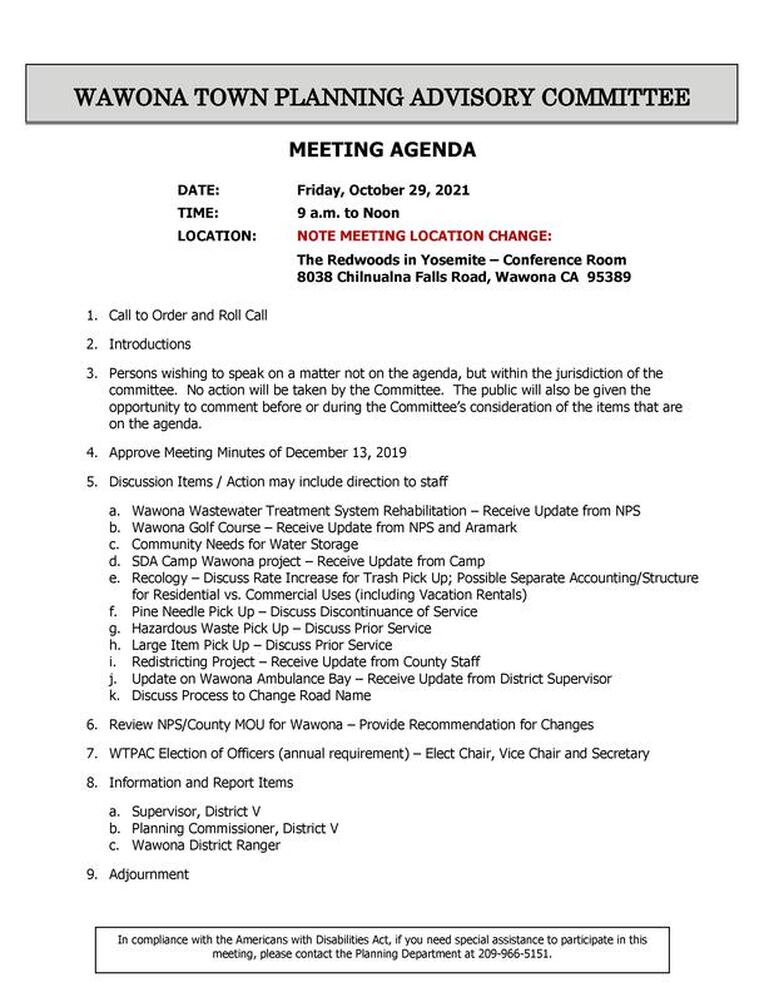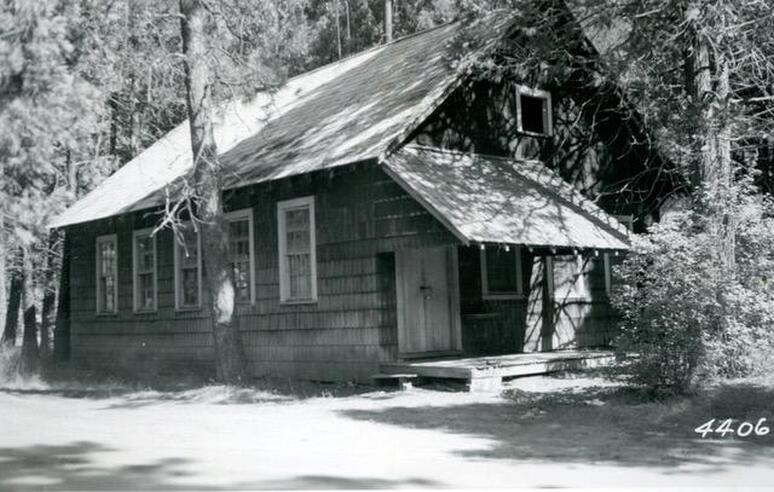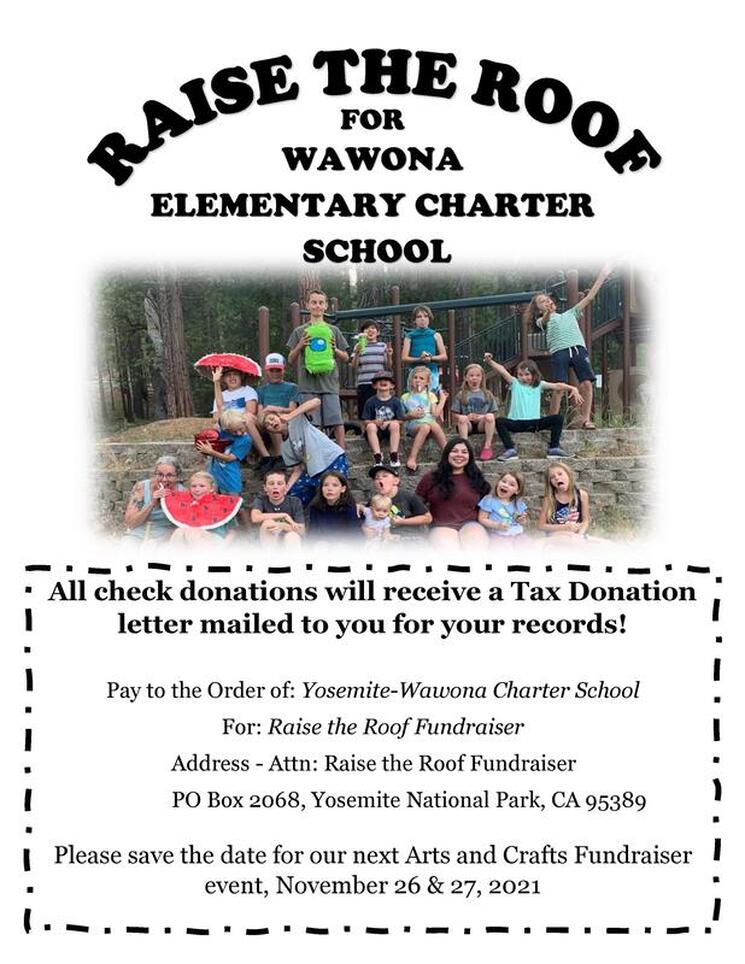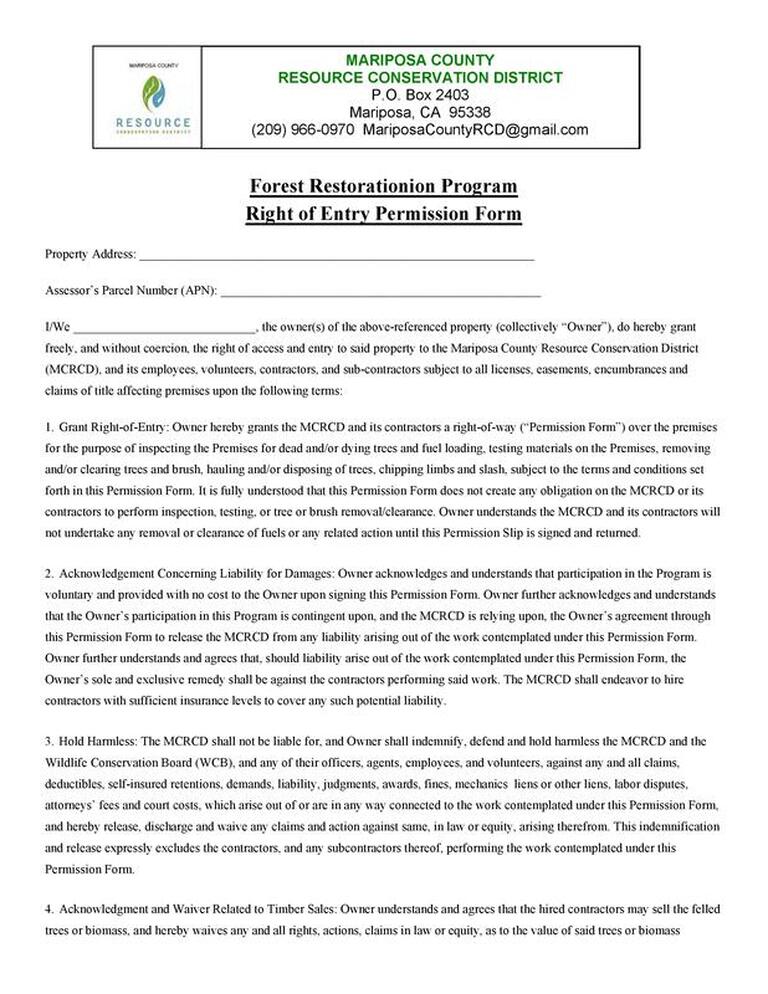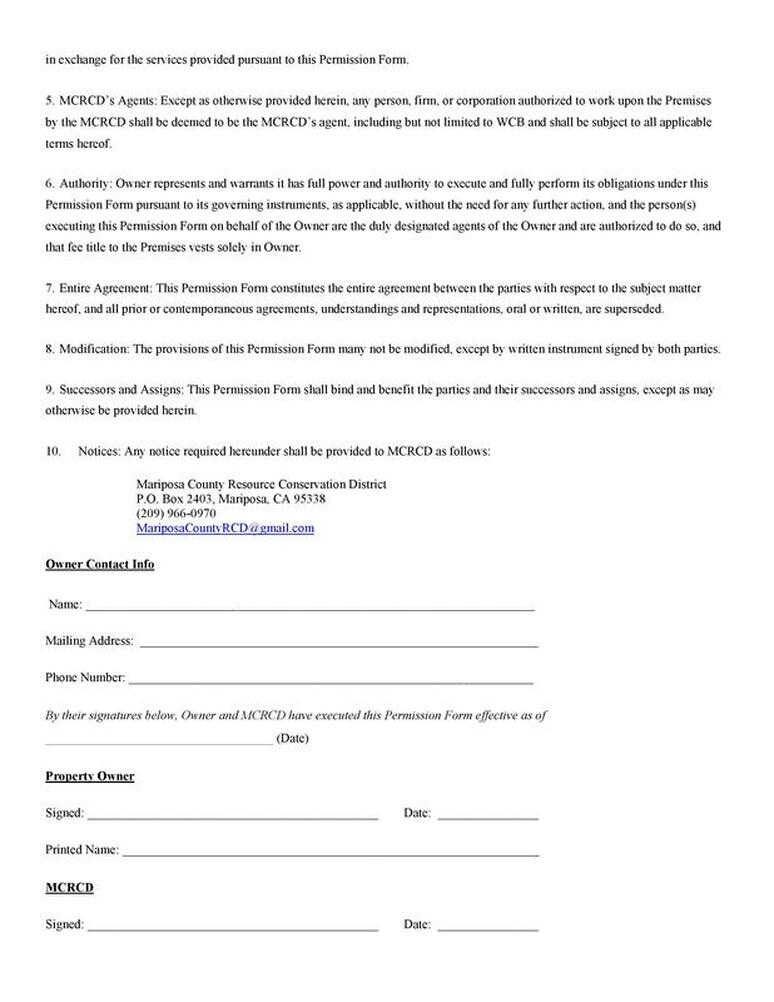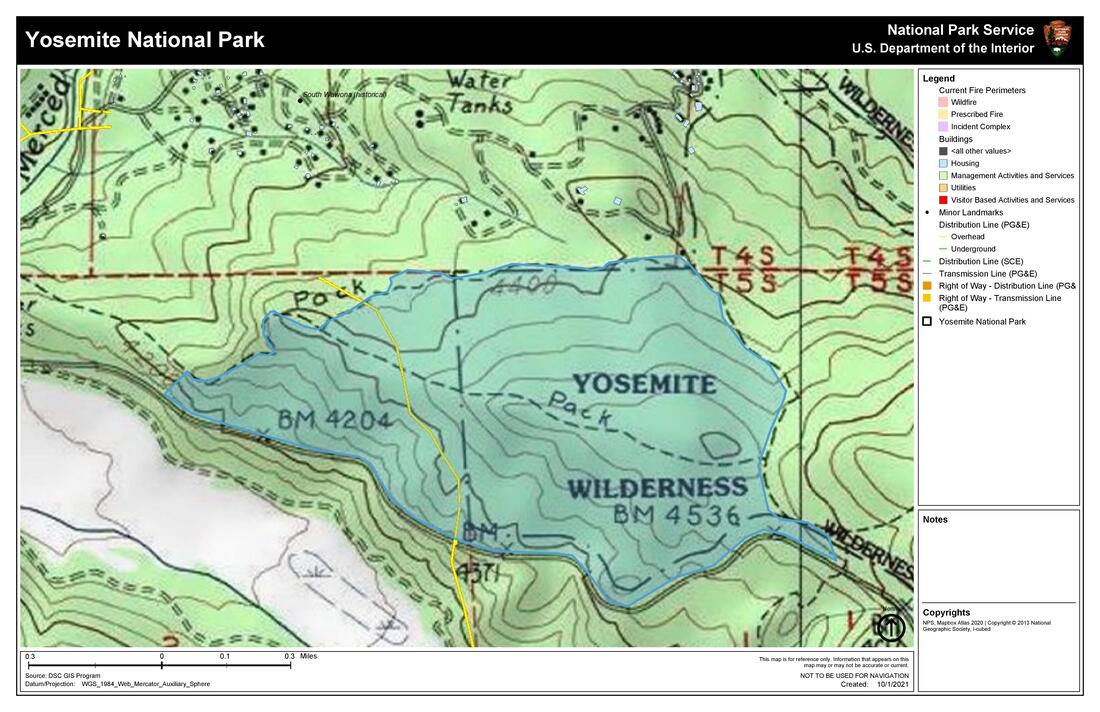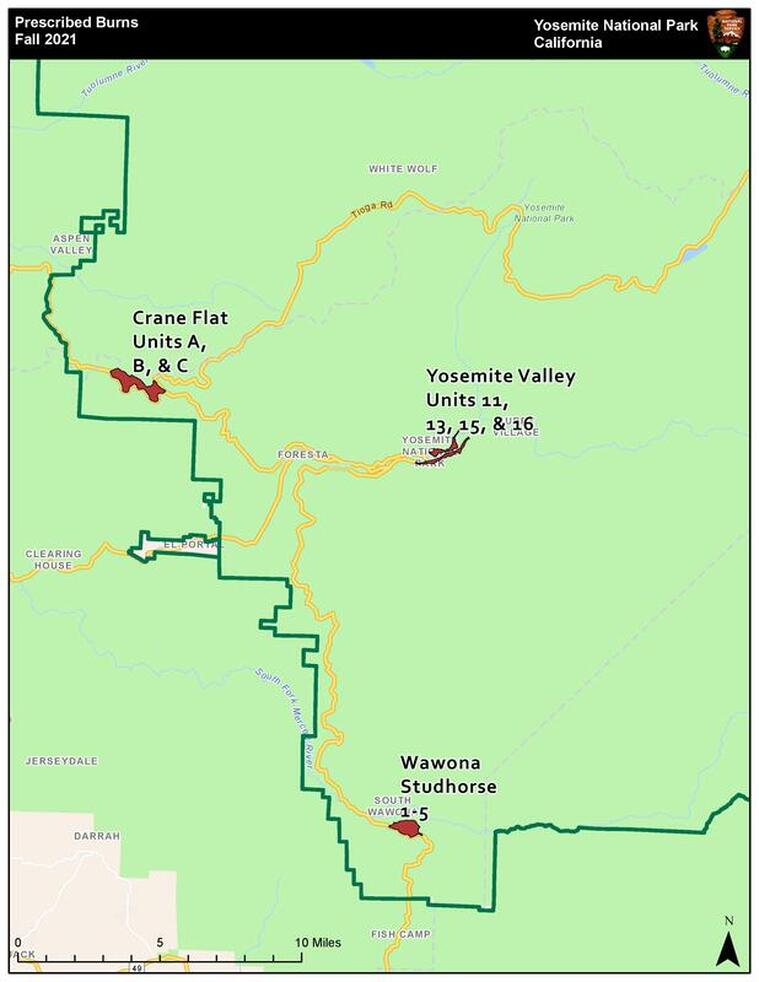WawonaNews.com - November 2021
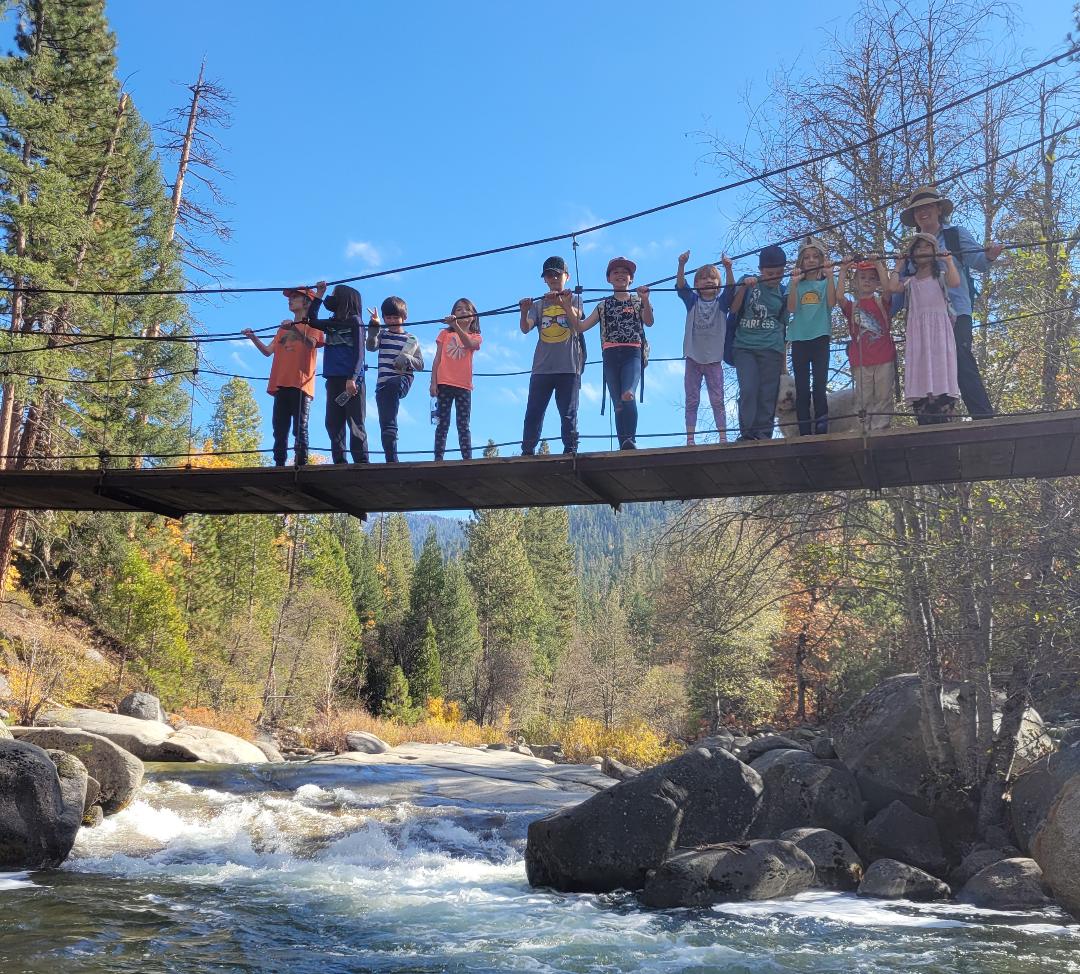
Yosemite-Wawona Elementary Charter School Thanksgiving Bazaar
9 AM to 5 PM
at the School
Details and options for remote bidding to follow! We need donations and volunteers. Please contact Katie Henderson at [email protected]
- Arts and Crafts Sale
- Silent Auction
- Raffle Baskets
- Children's Activities
9 AM to 5 PM
at the School
Details and options for remote bidding to follow! We need donations and volunteers. Please contact Katie Henderson at [email protected]
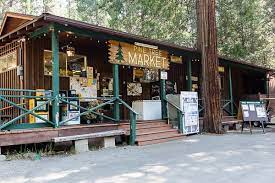
Vaccines in Wawona Wednesday, November 10th
The Yosemite Medical Clinic folks will be vaccinating at the Pine Tree Market from 10am to 2pm on Wednesday November 10th.
They'll be offering:
Influenza shots
Moderna (first dose, second dose, and boosters)
Pfizer Kids vaccines
Unfortunately they don't have the additional staff to do individual clinics in Fish Camp and in Yosemite West, but anyone is welcome to attend the clinic at the Market.
Feel free to let me know if you have any questions at all. If vaccine demand remains strong, they may head out there again for another round in December.
Thanks,
Andy
Andy Carter, CAPM
Sr. Administrative Analyst
Health and Human Services Agency
5362 Lemee Lane
PO Box 99
The Yosemite Medical Clinic folks will be vaccinating at the Pine Tree Market from 10am to 2pm on Wednesday November 10th.
They'll be offering:
Influenza shots
Moderna (first dose, second dose, and boosters)
Pfizer Kids vaccines
Unfortunately they don't have the additional staff to do individual clinics in Fish Camp and in Yosemite West, but anyone is welcome to attend the clinic at the Market.
Feel free to let me know if you have any questions at all. If vaccine demand remains strong, they may head out there again for another round in December.
Thanks,
Andy
Andy Carter, CAPM
Sr. Administrative Analyst
Health and Human Services Agency
5362 Lemee Lane
PO Box 99
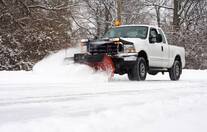
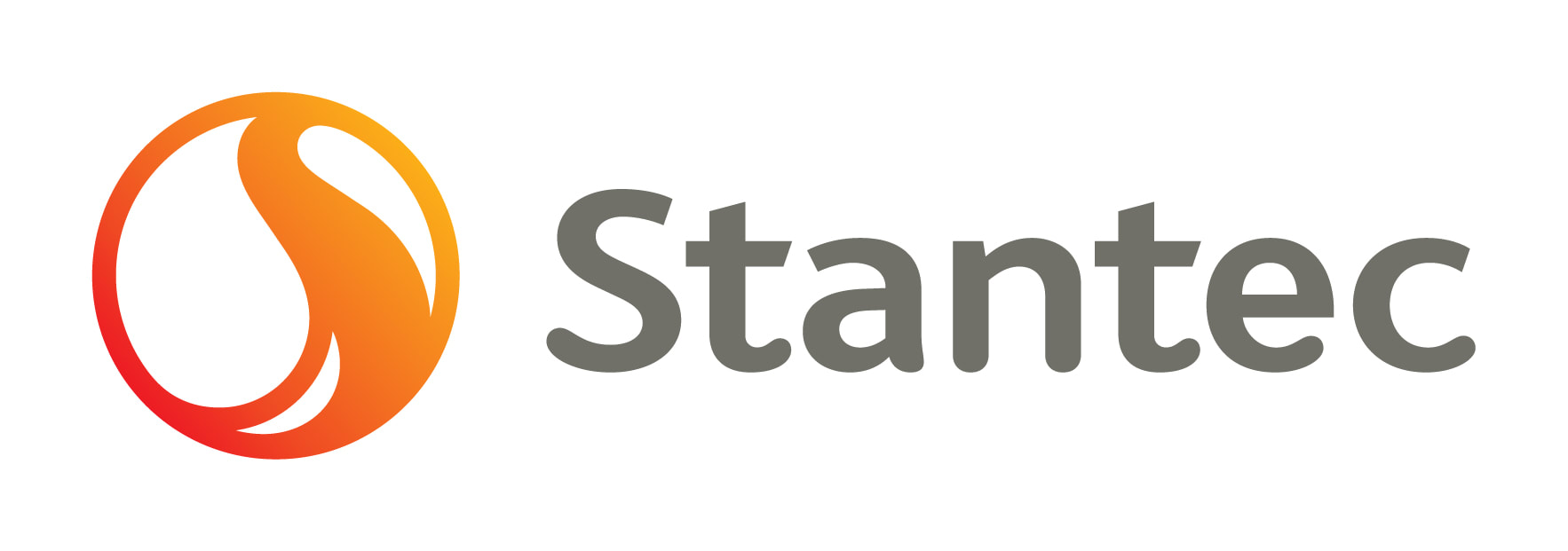
PG&E Archaeological Surveys
PG&E has contracted Stantec to conduct pedestrian archaeological surveys along their transmission and distribution lines within Yosemite National Park. Stantec Consulting Services Inc. will be returning to conduct pedestrian surveys outside and around your residences in El Portal, Foresta, and Wawona during the month of November 2021. Stantec is making observations for environmental compliance assessments on behalf of PG&E, and they will be wearing orange reflective vests and hard hats to make themselves readily identifiable. Their vehicles will also have a Yosemite administrative pass posted in the windshield.
Stantec will be working with PG&E to provide individual notifications to Wawona households for a survey in the Wawona private ownership areas. (J. Llewellyn)
PG&E has contracted Stantec to conduct pedestrian archaeological surveys along their transmission and distribution lines within Yosemite National Park. Stantec Consulting Services Inc. will be returning to conduct pedestrian surveys outside and around your residences in El Portal, Foresta, and Wawona during the month of November 2021. Stantec is making observations for environmental compliance assessments on behalf of PG&E, and they will be wearing orange reflective vests and hard hats to make themselves readily identifiable. Their vehicles will also have a Yosemite administrative pass posted in the windshield.
Stantec will be working with PG&E to provide individual notifications to Wawona households for a survey in the Wawona private ownership areas. (J. Llewellyn)
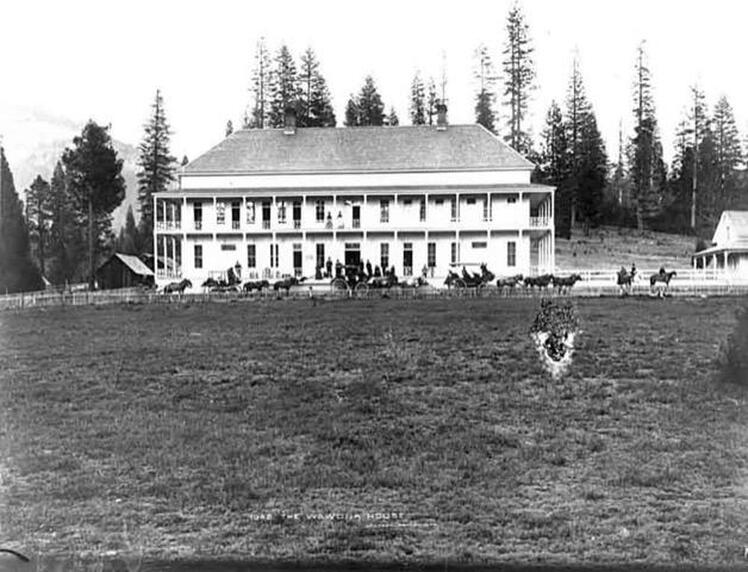 Distant view of the front of the Wawona Hotel from the late 1800s. (National Park Service)
Distant view of the front of the Wawona Hotel from the late 1800s. (National Park Service)
Nestled between Yosemite's ancient sequoias is the hidden history of Chinese immigrants
By Tonya Mosley and Allison Hagan
Yosemite National Park is known for its striking granite cliffs and ancient sequoia trees. But for many years nestled within that stunning scenery was the hidden history of the hundreds of Chinese immigrants who helped develop the park.
Their stories have remained largely unacknowledged for more than a century — until now. This month, Yosemite opened a restored Chinese laundry building on its grounds to the public. The exhibit will highlight the contributions of Chinese migrants to the park.
Get local arts and culture news, artist resources and ways to stay creative at home sent to your inbox each week. Sign up now.
Ranger Yenyen Chan played a crucial part in making the exhibit a reality. She's worked at the park since 2003 and spent years extensively researching the history of Chinese in Yosemite.
Chinese immigrants began arriving in greater numbers during the Gold Rush.
“Starting in 1848, they arrived in California just like people from all over the world. And they also started mining in the foothills of the Sierra Nevada range,” Chan says. “But pretty soon afterward, within two years, it was very difficult to become really wealthy.”
By Tonya Mosley and Allison Hagan
Yosemite National Park is known for its striking granite cliffs and ancient sequoia trees. But for many years nestled within that stunning scenery was the hidden history of the hundreds of Chinese immigrants who helped develop the park.
Their stories have remained largely unacknowledged for more than a century — until now. This month, Yosemite opened a restored Chinese laundry building on its grounds to the public. The exhibit will highlight the contributions of Chinese migrants to the park.
Get local arts and culture news, artist resources and ways to stay creative at home sent to your inbox each week. Sign up now.
Ranger Yenyen Chan played a crucial part in making the exhibit a reality. She's worked at the park since 2003 and spent years extensively researching the history of Chinese in Yosemite.
Chinese immigrants began arriving in greater numbers during the Gold Rush.
“Starting in 1848, they arrived in California just like people from all over the world. And they also started mining in the foothills of the Sierra Nevada range,” Chan says. “But pretty soon afterward, within two years, it was very difficult to become really wealthy.”
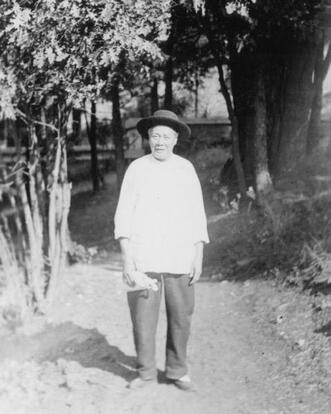 Ah You, chef at the Wawona Hotel (National Park Service)
Ah You, chef at the Wawona Hotel (National Park Service)
In 1850, the U.S. government passed the $20 per month Foreign Miners Tax, which made it difficult for immigrants to make a living mining. This led Chinese miners to look for other types of work.
Many workers took difficult, laborious jobs like helping build the transcontinental railroad in the 1860s after moving on from mining, Chan says.
When people first started flocking to Yosemite’s beautiful scenery, it was difficult to get to Yosemite Valley. Chinese workers were hired to build many of the early stage wagon roads in the park, she says.
Without the help of modern machinery, these workers used hand picks, shovels and wheelbarrows to build many of Yosemite’s primary roads.
The park’s elevation ranges from 2,000 feet to 13,000 feet above sea level, Chan says. Chinese workers helped build Tioga Road, which climbs from 6,000 feet to 10,000 feet in elevation and drops several thousand feet back down on the other side of the mountain.
“That was a 56-mile road that approximately 350 Chinese and 90 European-American road workers worked together to build in only 130 days,” she says. “So it was a pretty monumental feat.”
And the legacy of Chinese immigrants in Yosemite goes far beyond road workers: Several Chinese chefs made their mark on the area. Many Chinese immigrants used skills from home to work at hotels in the area as cooks and bakers, Chan says.
Ah You, for example, worked as the head chef at Yosemite’s Wawona Hotel for 47 years.
Another chef named Tie Sing worked as a cook for the U.S. Geological Survey for 30 years. He followed the map makers through the wilderness and cooked them “elaborate backcountry meals” — a difficult task during these several-week long trips, Chan says.
The mapmakers loved Sing so much that in 1899, they named Sing Peak after him.
In 1915, then-Assistant Secretary of the Interior Stephen Mather hired Sing to cook for his Mather Mountain Party trips. Mather was trying to convince Congress to form the National Park Service, which didn’t exist at the time. Within one year of the trips, Congress passed the Organic Act which established the NPS, Chan says.
“Those trips were so instrumental in convincing these people about the wonders of our wilderness areas,” she says. “So I like to think of Tie Sing of having this significant role in convincing Congress and the public of the need for the National Park Service.”
These Chinese workers largely stayed unnoticed and unrecognized for so many years, both during that time and the many decades of the park's history that followed.
Locals knew about the impact Chinese immigrants had on the area working on roads, in kitchens and in laundry facilities — but from 1882 to 1943, the Chinese Exclusion Act put a gap in this history, Chan says.
“This history was just under the surface, and local people in and around Yosemite knew about the contributions of the Chinese. They helped work in the ranches, they helped in the farms,” she says. “But the story just hadn't been pieced together.”
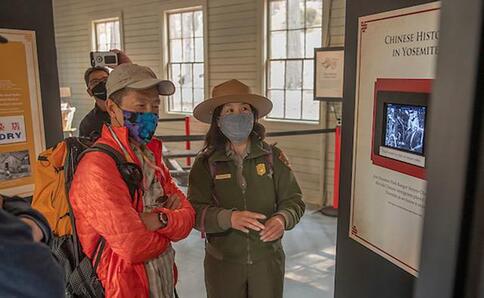 Park Ranger Yenyen Chan (right) interacting with park visitors in the new Chinese Laundry Building exhibit at the Yosemite History Center in Wawona. (National Park Service)
Park Ranger Yenyen Chan (right) interacting with park visitors in the new Chinese Laundry Building exhibit at the Yosemite History Center in Wawona. (National Park Service)
Asian American visitors get a sense of pride seeing the park recognize their ancestors’ stories, she says.
As a park ranger, Chan aims to deepen visitors’ connections with Yosemite. She decided she wanted to inspire people to connect with nature after her first backpacking trip through the park as a teenager.
Park rangers are also storytellers, she says, who share tales of the animals, plants and cultural heritage of Yosemite.
“I think it's important to share the contributions made by all people in this country,” she says, “including people like Tie Sing and Ah You and the early Chinese who helped make Yosemite what it is today.”
Kalyani Saxena produced and edited this interview for broadcast with Todd Mundt. Allison Hagan adapted it for the web.
This segment aired on October 20, 2021.
As a park ranger, Chan aims to deepen visitors’ connections with Yosemite. She decided she wanted to inspire people to connect with nature after her first backpacking trip through the park as a teenager.
Park rangers are also storytellers, she says, who share tales of the animals, plants and cultural heritage of Yosemite.
“I think it's important to share the contributions made by all people in this country,” she says, “including people like Tie Sing and Ah You and the early Chinese who helped make Yosemite what it is today.”
Kalyani Saxena produced and edited this interview for broadcast with Todd Mundt. Allison Hagan adapted it for the web.
This segment aired on October 20, 2021.
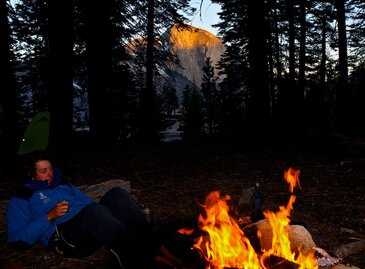
Yosemite National Park Fire Restrictions Lifted 10/19
Yosemite Fire Restrictions Rescinded
A combination of recent rain, snow, and cooler temperatures has reduced the fire danger within Yosemite National Park, enabling the Superintendent to lift fire restrictions put in place earlier this year.
By order of the Superintendent of Yosemite National Park and under authority of Title 36, Code of Federal Regulations, Section 2.13(c):
• All previously enacted fire restrictions are hereby lifted, and all associated orders rescinded.
• Campfires are once again permitted in the Yosemite Wilderness where not otherwise prohibited by regulation. Fires remain prohibited above 9600 feet and in other designated areas due to scarcity of wood and resource concerns. Where fires are permitted, existing campfire rings must be used.
• Campfires and cooking fires may be used in designated campgrounds, picnic areas, and residential areas in accordance with park regulations.
• Where wood gathering is permitted, only dead and down wood may be gathered.
• Extinguish cigarettes prior to disposal; filters must be properly disposed of in a trash receptacle.
Cicely Muldoon 10/19/2021
Superintendent
Signed order link below.
Yosemite Fire Restrictions Lifted signed PDF
-NPS-
Yosemite Fire Restrictions Rescinded
A combination of recent rain, snow, and cooler temperatures has reduced the fire danger within Yosemite National Park, enabling the Superintendent to lift fire restrictions put in place earlier this year.
By order of the Superintendent of Yosemite National Park and under authority of Title 36, Code of Federal Regulations, Section 2.13(c):
• All previously enacted fire restrictions are hereby lifted, and all associated orders rescinded.
• Campfires are once again permitted in the Yosemite Wilderness where not otherwise prohibited by regulation. Fires remain prohibited above 9600 feet and in other designated areas due to scarcity of wood and resource concerns. Where fires are permitted, existing campfire rings must be used.
• Campfires and cooking fires may be used in designated campgrounds, picnic areas, and residential areas in accordance with park regulations.
• Where wood gathering is permitted, only dead and down wood may be gathered.
• Extinguish cigarettes prior to disposal; filters must be properly disposed of in a trash receptacle.
Cicely Muldoon 10/19/2021
Superintendent
Signed order link below.
Yosemite Fire Restrictions Lifted signed PDF
-NPS-
- Air Quality: Yosemite Air Quality Page or airnow.gov or airnow.gov/fires
- Trail Closures: https://www.nps.gov/yose/planyourvisit/conditions.htm
- Fire Restrictions: https://www.nps.gov/yose/planyourvisit/firerestrictions.htm
- National Weather Service Yosemite area forecast: www.weather.gov/hanford
- Sign-up for Alerts: go.nps.gov/alert
- Yosemite National Park Fire Information webpage: go.nps.gov/yosefire
- Facebook: @YosemiteFire
- Twitter: @YosemiteFire
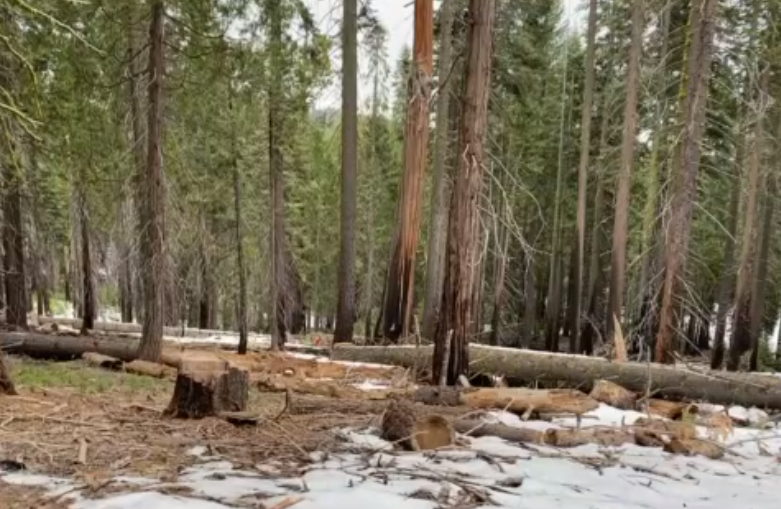
Yosemite Valley Prescribed Burn October 21-23
On Thursday, October 21-Saturday, October 23, weather and conditions permitting, fire crews will begin prescribed burning units 11 & 16 in Yosemite Valley. Unit 11 is located south of Southside Drive near the El Capitan Crossover and Unit 16 is located between Southside Drive and the Four Mile trailhead. Ignitions will occur over both days. There will be possible trail closures in Yosemite Valley, including the Valley Loop Trail from the Four Mile trailhead to the El Captain crossover along Southside Drive. One lane traffic control will also be in place along Southside Drive in the area of the burn.
Prescribed burn units have been carefully designed to meet multiple objectives. The objectives of this prescribed burn are to restore and maintain plant communities shaped by Native Americans, restore fire and a more natural ecosystem structure to communities, maintain meadows and healthy stands of conifers, reduce hazardous fuels, and provide protection to infrastructure. Each prescribed burn unit has defined weather parameters and firing patterns to ensure the objectives for each unit have a high potential for success. Yosemite fire and resources staff will monitor all prescribed burns to evaluate achievement of goals and help guide future prescriptions.
Visitors and employees should be aware that smoke may be present starting Friday and could linger to a much lesser degree into next week as large logs are consumed. Fire managers work closely with Park staff and the local air pollution control districts to time the prescribed burns to coincide with favorable weather and smoke dispersion conditions. Smoke impacts are always a consideration in the decision to begin any prescribed burning operation. Burning will only be conducted under favorable dispersal conditions as specified in the smoke permit.
-NPS-
Printable Valley RX Flyer PDF
Printable Valley RX Map PDF
On Thursday, October 21-Saturday, October 23, weather and conditions permitting, fire crews will begin prescribed burning units 11 & 16 in Yosemite Valley. Unit 11 is located south of Southside Drive near the El Capitan Crossover and Unit 16 is located between Southside Drive and the Four Mile trailhead. Ignitions will occur over both days. There will be possible trail closures in Yosemite Valley, including the Valley Loop Trail from the Four Mile trailhead to the El Captain crossover along Southside Drive. One lane traffic control will also be in place along Southside Drive in the area of the burn.
Prescribed burn units have been carefully designed to meet multiple objectives. The objectives of this prescribed burn are to restore and maintain plant communities shaped by Native Americans, restore fire and a more natural ecosystem structure to communities, maintain meadows and healthy stands of conifers, reduce hazardous fuels, and provide protection to infrastructure. Each prescribed burn unit has defined weather parameters and firing patterns to ensure the objectives for each unit have a high potential for success. Yosemite fire and resources staff will monitor all prescribed burns to evaluate achievement of goals and help guide future prescriptions.
Visitors and employees should be aware that smoke may be present starting Friday and could linger to a much lesser degree into next week as large logs are consumed. Fire managers work closely with Park staff and the local air pollution control districts to time the prescribed burns to coincide with favorable weather and smoke dispersion conditions. Smoke impacts are always a consideration in the decision to begin any prescribed burning operation. Burning will only be conducted under favorable dispersal conditions as specified in the smoke permit.
-NPS-
Printable Valley RX Flyer PDF
Printable Valley RX Map PDF
- Air Quality: Yosemite Air Quality Page or airnow.gov or airnow.gov/fires
- National Weather Service Yosemite area forecast: www.weather.gov/hanford
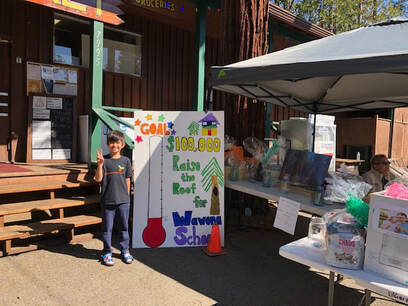
Raise the Roof Fundraiser
A HUGE thank you to the Wawona Community for coming out and supporting us on Saturday. We raised $4,900 towards our ‘Raise the Roof’ fundraising.
We will be having another raffle Thanksgiving weekend. If you’d like to show your support, you may send checks in to YWECS, PO Box 2068, Wawona, CA 95389. We are also registered with AmazonSmile as a charitable foundation.
Stacy Boydstun
A HUGE thank you to the Wawona Community for coming out and supporting us on Saturday. We raised $4,900 towards our ‘Raise the Roof’ fundraising.
We will be having another raffle Thanksgiving weekend. If you’d like to show your support, you may send checks in to YWECS, PO Box 2068, Wawona, CA 95389. We are also registered with AmazonSmile as a charitable foundation.
Stacy Boydstun

YOSEMITE-WAWONA ELEMENTARY CHARTER SCHOOL
Board of Directors Regular Meeting
Wednesday, October 12, 2021
5:30 P.M.
Wawona Elementary School
7925 Chilnualna Falls Road
Wawona, CA
MONTHLY ITEMS AND FINANCIAL REPORTS
3.1- Approval of Agenda
3.2– Approval of Minutes of the regular meeting of Sept. 15
3.3 – Accept Resignation for Sylvia Loza effective on October 14
3.3 - Approve Warrants/Payroll
3.4 – Accept Donations to YWECS
ACTION ITEMS
Consideration and action on the approval of a contract with Esme McCarthy for financial/ accounting services for the 2021–22 school year.
INFORMATION ITEMS
Board of Directors Regular Meeting
Wednesday, October 12, 2021
5:30 P.M.
Wawona Elementary School
7925 Chilnualna Falls Road
Wawona, CA
- CALL TO ORDER
- ROLL CALL
MONTHLY ITEMS AND FINANCIAL REPORTS
- CONSENT AGENDA
3.1- Approval of Agenda
3.2– Approval of Minutes of the regular meeting of Sept. 15
3.3 – Accept Resignation for Sylvia Loza effective on October 14
3.3 - Approve Warrants/Payroll
3.4 – Accept Donations to YWECS
- HEARING OF PERSONS WISHING TO ADDRESS THE BOARD
ACTION ITEMS
- APPROVAL OF INDEPENDENT CONTRACTOR FOR FINANCIAL AND ACCOUNTING SERVICES FOR THE 2021-22 SCHOOL YEAR.
Consideration and action on the approval of a contract with Esme McCarthy for financial/ accounting services for the 2021–22 school year.
- APPROVE THE HIRING OF PETRONELLA GURULE AS AN INSTRUCTIONAL ASSISTANT FOPR THE REMAINDER OF THE 2021-22 SCHOOL YEAR.
INFORMATION ITEMS
- YWECS FUNDRAISER DISCUSSION
- STAFF REPORTS
- BOARD MEMBER COMMENTS
- FUTURE AGENDA ITEMS
- NEXT BOARD MEETING
- ADJOURNMENT
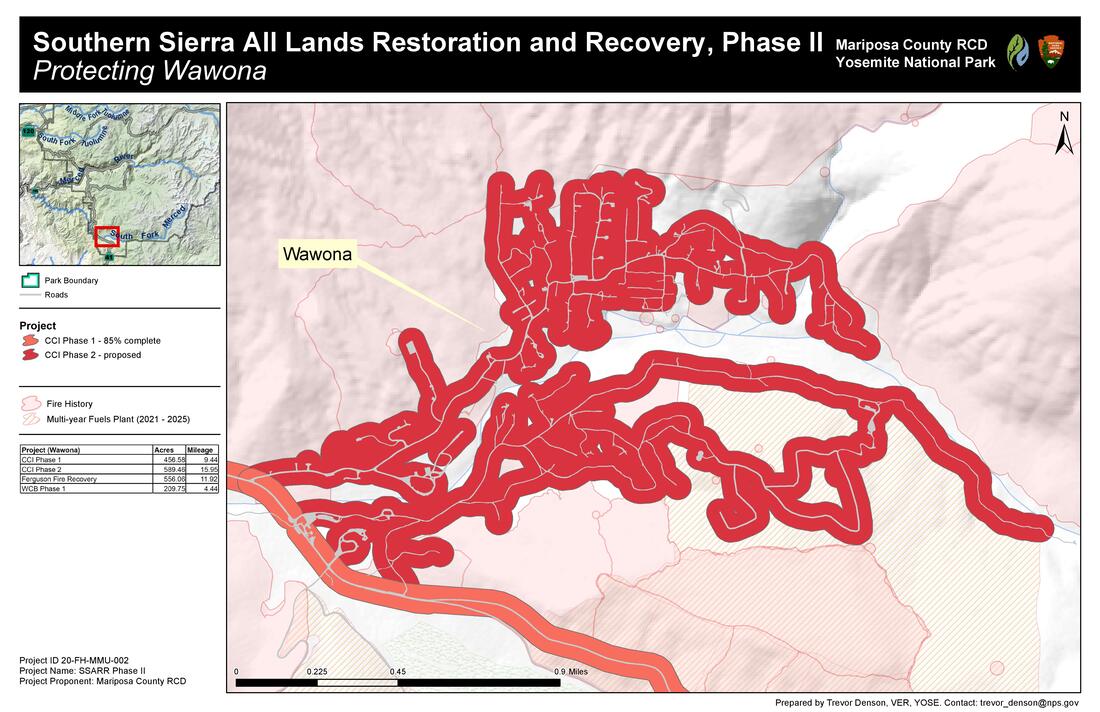
Fuels Reduction Grant For Wawona
Map showing area along Wawona Road where most of the fuels reduction work has been completed, and the areas of Wawona which qualify for the new grant
Wawona will soon be getting some much needed help with fuels reduction. Melinda Barret, from the Mariposa County Resource Conservation District has informed us that the county recently received a grant to do fuels reduction work in and around Wawona. At this time, the county is looking into project area boundaries and anyone who wants to participate will need to sign a Right of Entry and Environmental documents posted below. The county will be coordinating with WAPPOA to make sure any residents who sign the necessary forms will qualify for this program.
TO PRINT THIS DOCUMENT, CLICK ON THE "DOWNLOAD THIS PDF" LINK AT THE BOTTOM OF THE PAGE TO DOWNLOAD IT TO YOUR COMPUTER. THEN SIGN AND RETURN BY MAIL TO ADDRESS AT TOP OF FORM.
Map showing area along Wawona Road where most of the fuels reduction work has been completed, and the areas of Wawona which qualify for the new grant
Wawona will soon be getting some much needed help with fuels reduction. Melinda Barret, from the Mariposa County Resource Conservation District has informed us that the county recently received a grant to do fuels reduction work in and around Wawona. At this time, the county is looking into project area boundaries and anyone who wants to participate will need to sign a Right of Entry and Environmental documents posted below. The county will be coordinating with WAPPOA to make sure any residents who sign the necessary forms will qualify for this program.
TO PRINT THIS DOCUMENT, CLICK ON THE "DOWNLOAD THIS PDF" LINK AT THE BOTTOM OF THE PAGE TO DOWNLOAD IT TO YOUR COMPUTER. THEN SIGN AND RETURN BY MAIL TO ADDRESS AT TOP OF FORM.
Your browser does not support viewing this document. Click here to download the document.
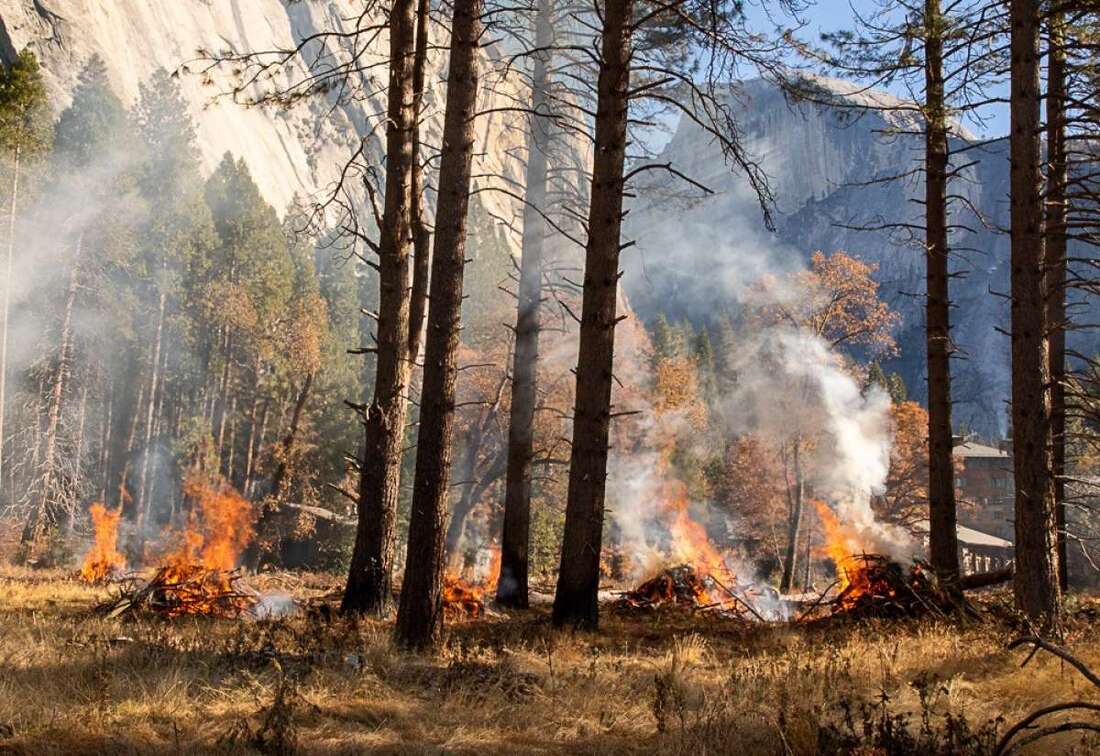
Yosemite Fall/Winter Prescribed Burns 2021
Fall has arrived bringing cooler temperatures and precipitation in the forecast. With these favorable conditions approaching, Yosemite National Park hopes to build on its 51-year legacy of prescribed burning by conducting several prescribed fires in the Valley, Crane Flat, and Studhorse (Wawona) areas as conditions allow. In addition, pile burning is also planned in several other locations throughout the park.
Prescribed fire is the most efficient and effective way to decrease the risk of unwanted wildfires by reducing excessive fuel build-up, improve habitat for wildlife, mitigate future smoke impacts, encourage sprouting of seedling sequoia trees, restore cultural burning practices, and creating more drought and fire resilient forests.
All these benefits are accomplished by burning piles of pre-stacked wood and debris or by doing larger scale broadcast burns in strategic areas within the park. Prescribed burn units have been carefully designed to meet multiple objectives. Each prescribed burn unit has defined weather parameters and firing patterns to ensure the objectives for each unit have a high potential for success. Yosemite fire and resources staff will monitor all prescribed burns to evaluate achievement of goals and help guide future prescriptions.
This year has been one of the most devasting fire seasons on record nationally. Record acreage burned, loss of life, loss of homes, businesses and infrastructure have exceeded past years totals. Loss to such species as the Giant Sequoias, which only grow in California’s Sierra Nevada have been devastating. It is estimated that between 2020 and this year well over 10% of Sequoias have been lost to wildfire. Prescribed burning is one of the most effective tools to mitigate the risk of unwanted wildfire, reduce fire intensity, and protect infrastructure and natural resources.
Crane Flat
Units A, B, C: 461 acres
The units in Crane Flat are located along the intersection of Big Oak Flat Road and Tioga Road, south of the Crane Flat Look-out Road and Rockefeller Grove, and east of Tuolumne Grove of Giant Sequoias.
The prescribed burn objectives are to provide protection to the Crane Flat helibase, surrounding infrastructure, and Crane Flat campground. This maintenance burn will restore a more natural ecosystem structure to plant communities. It will provide a buffer above the Big Oak Flat Road and will enable fire managers to plan for a prescribed burn in the Merced Grove of Giant Sequoias. This burn is the first sequence enabling the Park to reintroduce fire in the Merced Grove of Giant Sequoias. Reintroducing fire will be the best way to protect the grove from future high severity wildfires.
Studhorse
Units 1-5: 261 acres
The units in Studhorse are located south of the community of Wawona and north of Highway 41, and 2 miles northwest of the Mariposa Grove of Giant Sequoias.
The prescribed burn objectives are to maintain healthy, resilient forests, provide community protection around the community of Wawona, and to provide protection to the surrounding communities. This burn is also the first sequence to enabling the Park to continue to prescribe burn within Mariposa Grove and reintroduce fire in the surrounding units to provide protection to the groves. Some of the first prescribed burns in Yosemite occurred in the Studhorse area in the 1970s.
Yosemite Valley
Units 11,13,15,16: 222 acres
These 4 units average 50 acres in size. Unit 11 is located south of Southside Drive near the El Capitan Crossover and Unit 16 is located between Southside Drive and the Four Mile trailhead loop. These two units will likely be burned during the same day. Unit 13 is in the El Capitan Picnic Area and unit 15 is located between the Merced River and Northside Drive about halfway between Yosemite Lodge and El Capitan. Units 13 and 15 will most likely be burned during the same day.
The Yosemite Valley Burn Plan is comprised of 30 units within the upper and lower Yosemite Valley and 5 Parkwide units located east and west of the valley. The objectives of the Yosemite Valley prescribed burns are to restore and maintain plant communities shaped by Native Americans, restore fire and a more natural ecosystem structure to communities, maintain meadows and healthy stands of conifers, and provide protection to infrastructure.
Black Oak restoration and pile burning
Calaveras Healthy Impact Product Solutions (CHIPS) crew composed of local residents and tribal members have been working on restoring California black oak groves in Yosemite Valley through tending in preparation for pile and prescribed burning. Black oak is a cultural keystone species for the park's seven affiliated tribes. Groves in Yosemite Valley were planted, tended, burned, and harvested by tribal members for centuries. They were removed from this role to the detriment of cultural traditions and the health of black oaks. Tribal and CHIPS crew members will tend to oaks and prepare the groves for prescribed burns. These activities will reestablish relationships with these groves, promote seedling and sapling recruitment and promote high-quality acorn production.
Residents and visitors should be aware that smoke will be present during all prescribed burning operations. Fire managers work closely with Park staff and the local air pollution control districts to time the prescribed burns to coincide with favorable weather and smoke dispersion conditions. Smoke impacts are always a consideration in the decision to begin any prescribed burning operation. Burning will only be conducted under favorable dispersal conditions as specified in the smoke permit.
-NPS-
For additional Information:
• Yosemite Fire Information: [email protected]
• Yosemite Fire Information: 209-372-0329
• Yosemite National Park Fire Information webpage: go.nps.gov/yosefire
• Facebook: @YosemiteFire
• Twitter: @YosemiteFire
• Air Quality: www.nps.gov/yose/learn/nature/aqmonitoring or airnow.gov/fires
Fall has arrived bringing cooler temperatures and precipitation in the forecast. With these favorable conditions approaching, Yosemite National Park hopes to build on its 51-year legacy of prescribed burning by conducting several prescribed fires in the Valley, Crane Flat, and Studhorse (Wawona) areas as conditions allow. In addition, pile burning is also planned in several other locations throughout the park.
Prescribed fire is the most efficient and effective way to decrease the risk of unwanted wildfires by reducing excessive fuel build-up, improve habitat for wildlife, mitigate future smoke impacts, encourage sprouting of seedling sequoia trees, restore cultural burning practices, and creating more drought and fire resilient forests.
All these benefits are accomplished by burning piles of pre-stacked wood and debris or by doing larger scale broadcast burns in strategic areas within the park. Prescribed burn units have been carefully designed to meet multiple objectives. Each prescribed burn unit has defined weather parameters and firing patterns to ensure the objectives for each unit have a high potential for success. Yosemite fire and resources staff will monitor all prescribed burns to evaluate achievement of goals and help guide future prescriptions.
This year has been one of the most devasting fire seasons on record nationally. Record acreage burned, loss of life, loss of homes, businesses and infrastructure have exceeded past years totals. Loss to such species as the Giant Sequoias, which only grow in California’s Sierra Nevada have been devastating. It is estimated that between 2020 and this year well over 10% of Sequoias have been lost to wildfire. Prescribed burning is one of the most effective tools to mitigate the risk of unwanted wildfire, reduce fire intensity, and protect infrastructure and natural resources.
Crane Flat
Units A, B, C: 461 acres
The units in Crane Flat are located along the intersection of Big Oak Flat Road and Tioga Road, south of the Crane Flat Look-out Road and Rockefeller Grove, and east of Tuolumne Grove of Giant Sequoias.
The prescribed burn objectives are to provide protection to the Crane Flat helibase, surrounding infrastructure, and Crane Flat campground. This maintenance burn will restore a more natural ecosystem structure to plant communities. It will provide a buffer above the Big Oak Flat Road and will enable fire managers to plan for a prescribed burn in the Merced Grove of Giant Sequoias. This burn is the first sequence enabling the Park to reintroduce fire in the Merced Grove of Giant Sequoias. Reintroducing fire will be the best way to protect the grove from future high severity wildfires.
Studhorse
Units 1-5: 261 acres
The units in Studhorse are located south of the community of Wawona and north of Highway 41, and 2 miles northwest of the Mariposa Grove of Giant Sequoias.
The prescribed burn objectives are to maintain healthy, resilient forests, provide community protection around the community of Wawona, and to provide protection to the surrounding communities. This burn is also the first sequence to enabling the Park to continue to prescribe burn within Mariposa Grove and reintroduce fire in the surrounding units to provide protection to the groves. Some of the first prescribed burns in Yosemite occurred in the Studhorse area in the 1970s.
Yosemite Valley
Units 11,13,15,16: 222 acres
These 4 units average 50 acres in size. Unit 11 is located south of Southside Drive near the El Capitan Crossover and Unit 16 is located between Southside Drive and the Four Mile trailhead loop. These two units will likely be burned during the same day. Unit 13 is in the El Capitan Picnic Area and unit 15 is located between the Merced River and Northside Drive about halfway between Yosemite Lodge and El Capitan. Units 13 and 15 will most likely be burned during the same day.
The Yosemite Valley Burn Plan is comprised of 30 units within the upper and lower Yosemite Valley and 5 Parkwide units located east and west of the valley. The objectives of the Yosemite Valley prescribed burns are to restore and maintain plant communities shaped by Native Americans, restore fire and a more natural ecosystem structure to communities, maintain meadows and healthy stands of conifers, and provide protection to infrastructure.
Black Oak restoration and pile burning
Calaveras Healthy Impact Product Solutions (CHIPS) crew composed of local residents and tribal members have been working on restoring California black oak groves in Yosemite Valley through tending in preparation for pile and prescribed burning. Black oak is a cultural keystone species for the park's seven affiliated tribes. Groves in Yosemite Valley were planted, tended, burned, and harvested by tribal members for centuries. They were removed from this role to the detriment of cultural traditions and the health of black oaks. Tribal and CHIPS crew members will tend to oaks and prepare the groves for prescribed burns. These activities will reestablish relationships with these groves, promote seedling and sapling recruitment and promote high-quality acorn production.
Residents and visitors should be aware that smoke will be present during all prescribed burning operations. Fire managers work closely with Park staff and the local air pollution control districts to time the prescribed burns to coincide with favorable weather and smoke dispersion conditions. Smoke impacts are always a consideration in the decision to begin any prescribed burning operation. Burning will only be conducted under favorable dispersal conditions as specified in the smoke permit.
-NPS-
For additional Information:
• Yosemite Fire Information: [email protected]
• Yosemite Fire Information: 209-372-0329
• Yosemite National Park Fire Information webpage: go.nps.gov/yosefire
• Facebook: @YosemiteFire
• Twitter: @YosemiteFire
• Air Quality: www.nps.gov/yose/learn/nature/aqmonitoring or airnow.gov/fires
